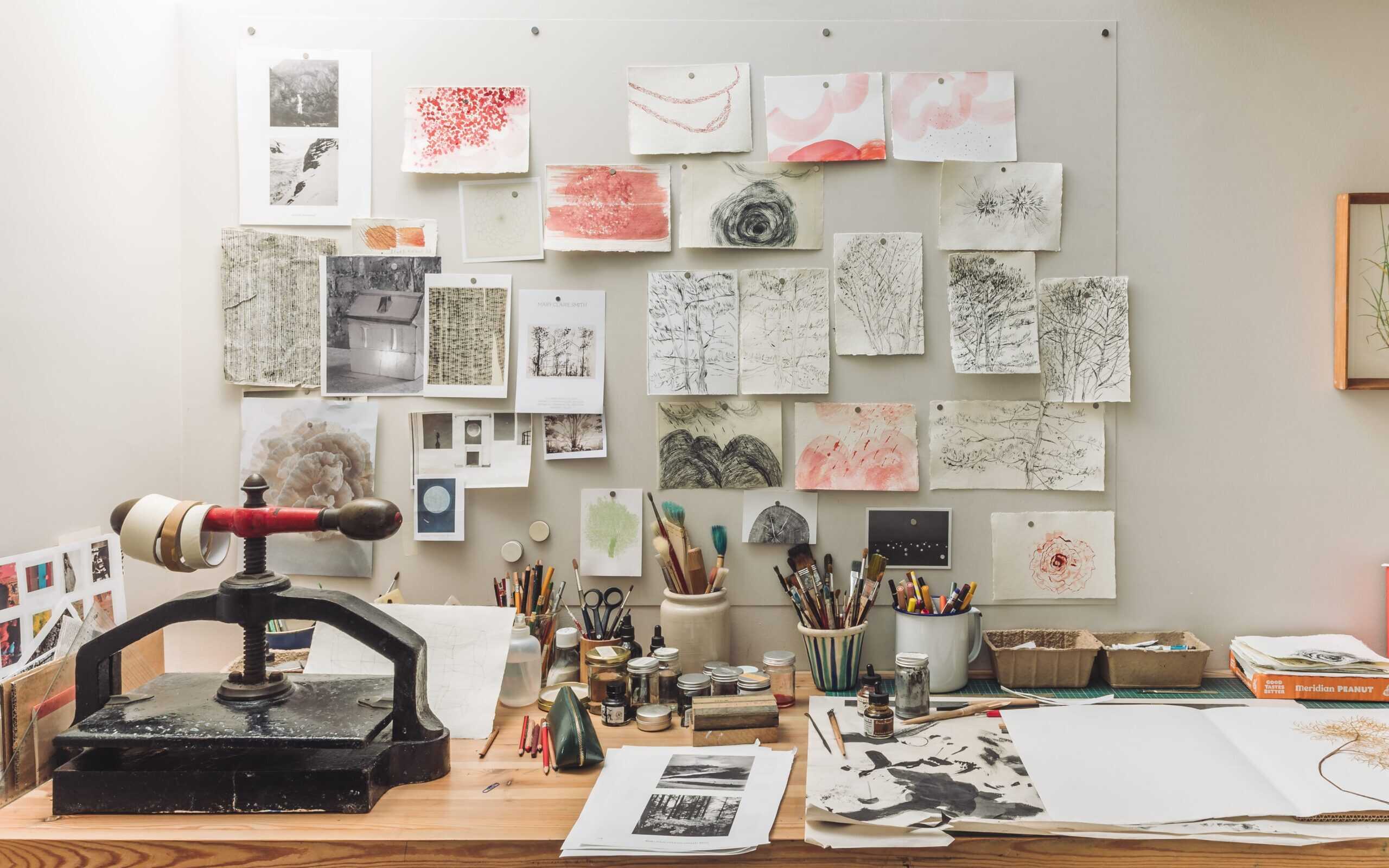About

Mary Claire Smith’s work is rooted in a sense of place within the natural environment, employing abstracted forms and lines reminiscent of botanical life to evoke imagined worlds – below water, above the earth – a return to something ancient and deep, wild and mysterious: of nature and of the body. She studies patterns of growth and rhythm, dialogues of expansion and contraction. Mary Claire works in series, repeating and revisiting archetypal forms: tree, plant, mountain, cloud, cave, circles and spheres. A current series uses simple, pared-down forms depicting the elemental forces of water, earth, fire and air. Another employs a daily walk, to create a journal of shapes and marks: land forms, patterns on water, cloud formations. Her work spans printmaking, painting and drawing, using Japanese and Khadi papers, botanical and traditional inks, paint, printing from woodcuts and grains, drypoint and screen print.
Mary Claire Smith studied Fine Art at Portsmouth Polytechnic and later studied Printmaking and Illustration at Central St Martins. She worked as an Editioning Printmaker and Studio Assistant at Paupers Press and Hope Sufferance studios in London. Mary Claire taught Art and Design on Further Education courses, and was a freelance illustrator for many years. She has run Frank Gallery in Whitstable for the past nineteen years, where her work is shown. Mary Claire is represented by Columbia Road Gallery, London, showing at The Affordable Art Fair.
Her work is available from frankworks.eu and columbiaroadgallery.com
Instagram: @mary.claire_smith
